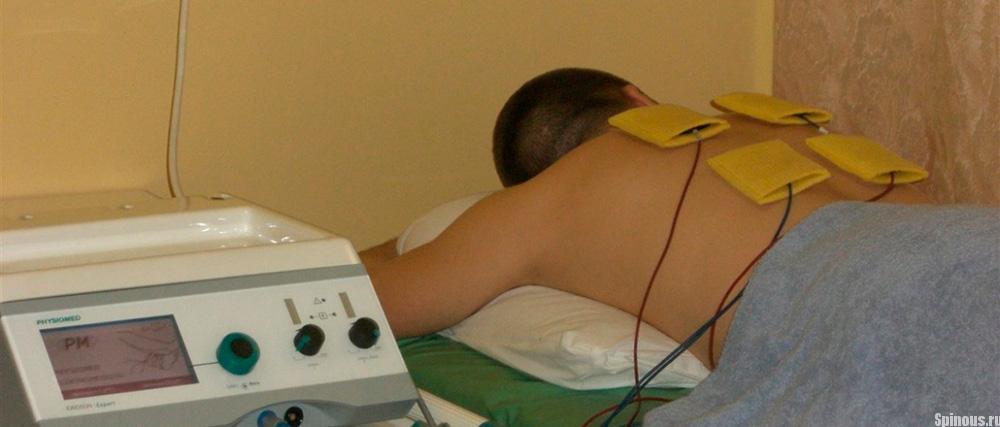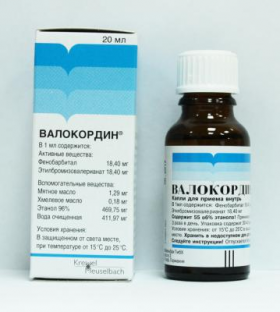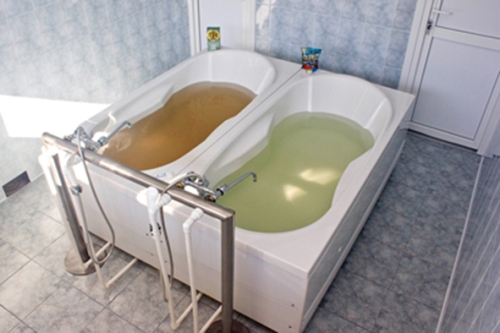Antipyretics for children are prescribed by a pediatrician. But there are emergency situations for fever when the child needs to be given medicine immediately. Then the parents take responsibility and use antipyretic drugs. What is allowed to give to infants? How can you bring down the temperature in older children? What medicines are the safest?
Thoracalgia - this is the name given in medicine to intercostal neuralgia. Sharp pain, which appears at the time of the attack, is similar to cardiovascular diseases. Even highly qualified doctors are able to confuse it with other diseases, since it is too general and can be inherent in a wide variety of pathologies. internal organs. However, it is difficult to call thoracalgia an independent disease, since it is usually the result of problems with the spine. Usually the cause of it is scoliosis, tumors, osteochondrosis. Against the background of the disease, the question of how to treat intercostal neuralgia correctly and how to reduce the likelihood of recurrence of seizures becomes relevant.
 There are enough reasons that can provoke an attack of intercostal neuralgia, but the result will always be the same - these are sharp pain sensations resulting from pinching in the thoracic region of the nerve root. Often the reason for this is various diseases spine, due to which the usual position of the skeleton is disturbed, but pinching can also occur as a result of muscle spasm.
There are enough reasons that can provoke an attack of intercostal neuralgia, but the result will always be the same - these are sharp pain sensations resulting from pinching in the thoracic region of the nerve root. Often the reason for this is various diseases spine, due to which the usual position of the skeleton is disturbed, but pinching can also occur as a result of muscle spasm.
A number of problems and pathologies, at first glance, not related to each other, can provoke pinching. These include events such as:
- physical injury,
- stress,
- infection,
- hypothermia,
- lung disease,
- toxic poisoning (including alcohol),
- allergy,
- aortic aneurysm,
- disease nervous system,
- diabetes,
- lack of vitamins (especially group B),
- excessive muscle tone.
The most at risk of developing intercostal neuralgia are those people whose work is associated with excessive stress combined with exposure to cold temperatures. The risk group should also include patients with ulcers, gastritis, colitis, hepatitis, since in this case, most often there is a violation in the nervous tissue of metabolic processes.
There are indeed enough reasons for the appearance, but in each case they must be established by a doctor after a preliminary diagnosis. This will directly determine which course of treatment to choose and how long the therapy will last.Features of the treatment of neuralgia
The disease requires timely treatment Therefore, therapy must begin with the appearance of the first attack. At the very beginning, treatment is aimed at eliminating the cause of the pain. During compression of the nerves, a sharp pain attack occurs, against which the patient is able to experience a number of other unpleasant symptoms. In particular, even difficulties with breathing, clouding of consciousness are possible. After reducing the intensity of pain, the therapy is adjusted and its goal is to improve the metabolic processes in the affected tissue.At the first attack, it is important to immediately consult a doctor in order to exclude the likelihood of developing other dangerous diseases masquerading as this process. He also selects concomitant treatment.
It is better to treat intercostal neuralgia in general under the supervision of a doctor, and not on your own. Many drugs recommended by someone were selected individually for other patients, taking into account the characteristics of their disease. In addition, many side effects can cause increased pain or worsening of the general condition.
In the first days after the onset of an attack, any selected treatment for intercostal neuralgia should be combined with bed rest. And it’s not enough just to get comfortable on the bed, because you need to lie down on a flat wooden shield or any other hard surface. You will also have to give up high pillows.
Medical therapy
For those faced with such a diagnosis as intercostal neuralgia - “how to treat?” the question is paramount. The primary method of therapy, of course, remains the use of various medications that help to achieve several important effects at once.
 Therapy with painkillers is especially necessary in the first couple. Accept at unbearable pain need to nonsteroidal drugs with anti-inflammatory action. Ideally, if a certain type of medication is recommended by the attending doctor at the appointment, but if the visit is postponed, then there is no need to endure the pain. It is better to look into the home first aid kit or visit a pharmacy and purchase suitable products from a pharmacist.
Therapy with painkillers is especially necessary in the first couple. Accept at unbearable pain need to nonsteroidal drugs with anti-inflammatory action. Ideally, if a certain type of medication is recommended by the attending doctor at the appointment, but if the visit is postponed, then there is no need to endure the pain. It is better to look into the home first aid kit or visit a pharmacy and purchase suitable products from a pharmacist.
The first step is to pay attention to the ampoules of painkillers intended for intramuscular injection. This type of treatment is often prescribed by doctors. The drugs Analgin, Ketorol, Ketonal are able to quickly remove negative sensations. However, the duration of their action is not so great, which is only suitable for cases where you need to remove pain for the next few hours. If it is important for you to know everything about the diagnosis ““, how to treat it, this is also useful information for you, because the course is limited to only 10 procedures, no more.
It is impossible to repeat injections with the above means often! Otherwise, it can directly affect health. Most often there is an exacerbation of chronic diseases (gastritis, ulcers and other pathologies of the stomach).
For elderly patients suffering from intercostal neuralgia, rectal suppositories are also well suited. For example, when using a drug such as Ketonal. Such treatment will be less painful for patients, and the analgesic effect of suppositories is much longer compared to injections.
 Do not ignore the assortment of ointments presented in the pharmacy, which also belong to the group. And although some skeptics argue that their effectiveness is small, but combined therapy, which includes the use of different means, gives the best results in treatment. The following tools are worth choosing:
Do not ignore the assortment of ointments presented in the pharmacy, which also belong to the group. And although some skeptics argue that their effectiveness is small, but combined therapy, which includes the use of different means, gives the best results in treatment. The following tools are worth choosing:
- diclofenac,
- nise,
- Voltaren,
- Ketonal.
You can choose other brands that have a similar composition. You need to rub the ointment into the area where the focus of pain is located, while trying not to put pressure on it and in no case massage it.
At night, instead of rubbing the product into the skin, you can use applications, applying fabric bandages with a thick layer of the product applied to them. If you have special patches, for example, "Ketonal thermo", then they will successfully replace home-made applications. A good alternative to this brand of patches are ordinary pepper patches. They have a warming effect and help relieve pain. Stick them on a dry area of \u200b\u200bthe skin, there should be no damage to it. A contraindication for the use of pepper patches is an allergy to all components that make up its composition.
Medicinal ointments based on snake or bee venoms are also very effective in the treatment of thoracalgia, but it is better not to use them in patients with heart and kidney diseases, fever. It is also necessary to limit their use during pregnancy and lactation. Ointments such as Viprosal and Alisarthron, along with painkillers, also have an anti-inflammatory effect. With a similar action, you can choose other means.
Pills
If there are no ointments or injections in the medicine cabinet, you can take any tableted painkillers with anti-inflammatory action (non-steroidal!) - Baralgin, Movalis, Nise, Analgin or others. The dosage is selected individually according to age and weight, but it is still not worth taking them uncontrollably. It is optimal if they are taken no more than 3 times a day, and after meals.
.In the treatment of mereber neuralgia, it is also permissible to use agents with a longer effect. For example, Melox forte is enough to use only once a day to get rid of pain.
Vitamin preparations
If the diagnosis of “intercostal neuralgia” confuses you, you don’t know how to treat the disease, in addition to taking the notorious painkillers, then you should definitely not neglect a visit to the doctor. This need is also dictated by the fact that the specialist prescribes a number of means with which it is possible to quickly get rid of pain syndrome and avoid recurrence in the future. This is what motivates the recommendation to take vitamins.
Complex vitamin preparations good, with reasonable use, they are support for the human body, help to avoid various diseases, maintaining immunity at the proper level. But with intercostal neuralgia, drugs with B vitamins are most often prescribed, since they simultaneously help relieve inflammation and restore nutrition to the affected tissue, which leads to a quick recovery.Experienced doctors note that injections of vitamins B1, B6, B12 are most effective. There are some peculiarities of the course of vitamin therapy, according to which only one vitamin can be injected in one day - either B6 or B1. There are usually no such restrictions on B12 preparations.
Medically supervised treatment
 For those who are interested in knowing how to treat intercostal neuralgia, it is worth noting that novocaine blockades are one of the most effective ways relieve pain quickly. This method of treatment is used only by doctors and is suitable for acute pain. It is impossible to carry out a novocaine blockade on your own, not only because a patient without medical education will not be able to determine the location of the nerve for the correct injection, but also because some patients may have serious contraindications for this.
For those who are interested in knowing how to treat intercostal neuralgia, it is worth noting that novocaine blockades are one of the most effective ways relieve pain quickly. This method of treatment is used only by doctors and is suitable for acute pain. It is impossible to carry out a novocaine blockade on your own, not only because a patient without medical education will not be able to determine the location of the nerve for the correct injection, but also because some patients may have serious contraindications for this.
Tranquilizers and muscle relaxants are also used for intercostal neuralgia, but much less frequently than other means, since they are not suitable for everyone and, moreover, have a number of side effects. Drugs of this spectrum help the patient achieve relaxation and calmness, weaken and muscle spasm.
Most often, Sibazon is used, but if these pills do not help, more serious ones may be prescribed. medicines. For such severe cases, injections are already needed, for example, Relanium.
You can take both muscle relaxants and tranquilizers only under the supervision of a doctor. They are released only according to his prescription, but even in this case, you can not self-medicate.
Glucocorticosteroids
This type of medicine belongs to the group of steroids and also has an anti-inflammatory effect. They are prescribed in cases where non-steroidal drugs no longer give any tangible effects during therapy, as well as with an extensive inflammatory process. Prednisolone in such cases is prescribed more often than other similar hormonal agents.
Glucocorticosteroids affect all areas of the body at once, so their intake is carried out strictly under the supervision of a doctor.
Physiotherapy procedures
 Neuralgia of the intercostal nerves is treated not only with a whole range of medicines, but also with physiotherapy. With the help of it, nutrition in the affected area of \u200b\u200bthe tissue improves, but some procedures help to relax muscles and relieve pain.
Neuralgia of the intercostal nerves is treated not only with a whole range of medicines, but also with physiotherapy. With the help of it, nutrition in the affected area of \u200b\u200bthe tissue improves, but some procedures help to relax muscles and relieve pain.
Reflex methods of therapy are most often used specifically for the first attacks of thoracalgia. It is customary to include:
- acupuncture,
- vacuum therapy,
- electrophoresis,
- phonophoresis,
- pharmacopuncture,
- manual therapy,
- physiotherapy exercises.
If the case is not serious, then thanks to these physiotherapeutic methods, it is possible to achieve tremendous results in treatment without resorting to medicines. Medications for therapy are attached, if necessary, on an individual basis.
If neuralgia manifests itself for the second time or occurs as a result of the development of diseases of the internal organs, then the measures described above are not limited, supplementing it with therapy that affects the cause of the onset of the disease. Since in each case these causes are different, then the treatment is selected purely individually.
Effective therapy can only be called in the case of complex application. different methods. Often referred to as kinesiology. And in case of problems with the spine, the restoration of its normal state will lead to recovery. The internal organs will also function normally with a healthy spinal column.
In addition to the physiotherapeutic methods of treatment described above, infrared and laser radiation, warming with dry heat, magnetotherapy, and shock wave exposure are also used.
Massage can also be attributed to one of the methods of physiotherapy, and no less effective. Most importantly, at the time of an acute pain attack, it cannot be used. It is allowed to use different massage techniques (cupping, acupressure, vacuum, classic), complementing them with each other or alternating. It is best if a specialist will carry out the procedure throughout the entire period of treatment, but many techniques can also be used with self-massage. Properly performed massage will help relieve muscle and mental tension, improve tissue nutrition, and relieve pain. At the time of the procedure, a good option would be to use essential oils citrus, pepper, geranium, rosemary or chamomile to enhance the effect. None folk recipes are not able to replace a full-fledged treatment, therefore, alternative medicine should be used only as an additional method of influence with the therapy already selected by the doctor. It is also worth getting his permission to use these techniques, because even the most harmless means can have their own contraindications and side effects.
None folk recipes are not able to replace a full-fledged treatment, therefore, alternative medicine should be used only as an additional method of influence with the therapy already selected by the doctor. It is also worth getting his permission to use these techniques, because even the most harmless means can have their own contraindications and side effects.
If you find an error, please highlight a piece of text and click Ctrl+Enter.
Intercostal neuralgia is not an independent disease, but just a syndrome characterized by pain along the intercostal nerves. Intercostal neuralgia can be called the "great simulator" - it disguises itself as any disease of the organs chest And abdominal cavity. But most often, neuralgic pains are mistaken for heart disease. What are the causes of intercostal neuralgia, how to distinguish it from heart pain, and what are the ways to treat it - the answers to these questions will help prevent and, in extreme cases, get rid of neuralgic chest pain.
Causes of intercostal neuralgia
Neuralgic pain occurs due to irritation or malnutrition of the intercostal nerves. You should not think that by relieving neuralgic pain, you can get rid of the disease. The result of the cure depends on the elimination of the true cause of the disease, of which there are quite a lot. This:
- pathology of the spine - intervertebral hernia, progressive scoliosis, Bechterew's disease, spinal oncology, osteochondrosis, spondylitis;
- toxic effects - alcohol, heavy metal poisoning, infectious intoxication (tuberculosis, shingles), side effect some medicines;
- endocrine disorders - menopause in women, diabetic condition, less often - pathology thyroid gland, a long course of hormone therapy;
- insufficiency of B vitamins - most often it is provoked by diseases of the gastrointestinal tract (hepatitis, ulcers, gastritis, colitis);
- mechanical damage to the nerves - spinal injuries, compression of the nerves by a tumor or scar formations;
- oxygen starvation of the nervous tissue - hypertension, anemia, rheumatism, heart disease.
However, the presence of one of these diseases is sometimes not enough to cause pain between the ribs. Intercostal neuralgia is provoked by factors that play the role of a "trigger":
- stress and chronic fatigue;
- physical activity, which leads to muscle strain;
- hypothermia and colds - flu, acute respiratory infections;
- immunodeficiency and pleurisy;
- old age - in children, intercostal pain syndrome (thoracalgia) is extremely rare.
Symptoms
Before treating intercostal neuralgia, it is necessary to accurately determine the cause of the pain. So, thoracalgia is characterized by:
- Pain spreading through the intercostal space with possible irradiation to the lower back, arm and shoulder blade. Soreness is manifested constantly for several hours or days, aggravated by movement and deep breathing.
- Painful probing of the intercostal space along the spine, along the edge of the sternum.
- Shortness of breath - the impossibility of a normal inhalation / exhalation due to severe pain.
- Involuntary twitching of certain muscles of the chest and back.
- External signs - redness or pallor of the skin over the pain focus, burning or decreased sensitivity up to complete numbness of a certain area.

Although the symptoms of intercostal neuralgia are quite vivid, it is sometimes very difficult to determine the neuralgic nature of the pain. The difference between a heart attack and intercostal neuralgia:
- When the heart hurts, there is a change in pulse and pressure, which is not the case with neuralgic attacks.
- The pain of the heart is not aggravated by minimal movements (turning the body, etc.). This is observed only with neuralgia.
- It is not possible to relieve the pain of a neuralgic nature with Nitroglycerin, which effectively helps with a heart attack.
However, this is not all. Similar symptoms occur both with intercostal neuralgia and with a heart attack. The main criterion that tends to the neuralgic nature of the occurrence of pain is the effectiveness of sedative drugs (Valocordin, Validol) in neuralgia and their absolute uselessness in developing myocardial necrosis. Also, with a heart attack, blood pressure often drops sharply, nausea and vomiting occur.
Why is intercostal neuralgia dangerous?
The main danger of thoracalgia is the similarity of its symptoms with many serious diseases that sometimes require urgent specific care. In addition to a heart attack and an angina attack, symptoms of intercostal neuralgia may hide renal colic, pancreatitis, and lung cancer.
Less life-threatening complication of neuralgic pain - chronization pathological process, the frequent relapses of which give the patient a lot of trouble and significantly affect the quality of his life.
Diagnostics
A huge number of causative diseases that provoke intercostal neuralgia require a full-scale examination of the whole organism. The most informative studies to diagnose neuralgia and establish its cause:
- CT scan;
Data diagnostic methods allow to detect tumor processes, inflammation spinal cord, spinal injury, vascular disorders and pathology of internal organs. Often, only the appointment of CT replaces several diagnostic procedures: ultrasound, x-ray, etc.
Treatment
Not a single person, even with a medical education, will be able to accurately diagnose and differentiate thoracalgia from other diseases without diagnostic studies. The first thing to do when chest pain occurs:

Thoracalgia therapy is aimed at eliminating pain symptoms and treating the causative disease. Therapeutic complex for intercostal neuralgia:
- Bed rest for 1-3 days. The bed must be hard.
- Anesthesia with NSAIDs that have a pronounced anti-inflammatory effect. Ketoprofen is especially effective in the form of ointments, capsules, rectal suppositories and injections. It is acceptable to use muscle relaxants (Baclofen, Clonazepam) to relieve muscle spasm.
- Local effects - mustard plasters, pepper plaster.
- In the absence of effect and ongoing pain - blockade (Novocaine and Prednisolone).
- Restoring the nutrition of the nervous tissue - vitamins B1, B6 and B12.
- With repeated attacks, the drug Blockium B12 is effective, which includes Diclofenac, the corticosteroid hormone Betamethasone and vitamin B12.
- Physiotherapy - dry heat, electrophoresis, laser exposure, acupuncture, magnetotherapy.
To cure intercostal neuralgia, drug therapy is supplemented with:
- etiotropic treatment - elimination of the cause of the disease, sometimes requiring surgical intervention(for example, with oncology, intervertebral hernia);
- lifestyle correction - the exclusion of alcohol and heavy physical exertion, the education of stress resistance, the increase in the body's defenses.
To the question "How long is intercostal neuralgia treated?" any doctor will answer as follows: “The pain completely disappears in a few days. However, the cause of the disease is treated long enough to avoid damage to the structure of the nerves and repeated neuralgic pains. Only the exclusion of mechanical compression of the intercostal nerves, their proper nutrition and the enrichment of the nervous tissue with oxygen will help to avoid severe painful symptoms.

Methods of treatment of intercostal neuralgia: from classical medicine to non-traditional approaches
Periodic pains of an indefinite nature in the region of the heart and lower back, shortness of breath, inability to breathe deeply - such symptoms are frightening with a harbinger of a serious heart or lung disease. Fearing a terrible diagnosis, a sick person does not dare to go to the doctor, continuing to endure pain and abandoning his usual way of life. Meanwhile, the symptoms can indicate intercostal neuralgia - a pathology that can be cured soon - but only if you do not wait until it goes into a neglected form.
Intercostal neuralgia: when the pain does not allow you to live normally
Neuralgia is a painful condition that is felt in the area of a nerve. Accordingly, intercostal neuralgia is manifested by pain in the region of the intercostal nerve. In order to understand the cause of pain, remember the anatomy.
In total, a person has 12 pairs of intercostal nerves, they are a continuation of the thoracic nerves, exit through the intervertebral foramina from the spinal canal. The intercostal nerves run along each intercostal space on the right and left sides of the chest. The lower pairs reach the anterior abdominal wall, therefore, with neuralgia, pain can be felt not only in the chest, but also in the abdomen. Doctors often consider the pain of the upper pairs to be the result of heart or lung diseases, while the pain of the lower pairs is a sign of pathologies of the stomach, liver, and pancreas.
Intercostal nerves consist of sensory, motor and autonomic fibers. If sensitive fibers are damaged, then the victim is worried about pain, if the motor fibers are short of breath, if the vegetative fibers are, there is increased sweating of the skin in the chest area.
Pain in intercostal neuralgia is strong, “shooting”, in terms of intensity comparable to pain in myocardial infarction, pleurisy, pancreatitis, peptic ulcer. However, unlike a heart attack and pleurisy, with neuralgia, you can feel the pain point by palpation. Nitroglycerin, coping with a heart attack, will be powerless. In addition, with intercostal neuralgia, pain may not go away for hours or even days.
This disease worries most often people of middle and older age, and practically does not occur in children.
Causes of the disease
Consider the main causes that can cause intercostal neuralgia:
- Osteochondrosis . This disease destroys cartilage tissue between the vertebrae, there is a pinching of the nerve coming from the spine along the intercostal space, which becomes a source of pain.
- Colds, hypothermia .
- Wearing tight underwear (among women). Underwired, tight bras that press hard on the body can mechanically compress the nerves, damaging them. Especially often this problem worries thin girls and women: due to their lack of subcutaneous fat, the nerves are located very close to the skin.
- herpes virus (herpes zoster, shingles). The disease is accompanied by rashes in the chest area, on the back. Bubbles and crusts disappear after a couple of weeks, but the pain does not go away for months, and without treatment - for years. This form of neuralgia is called postherpetic neuralgia and is most common in the elderly and in those with weakened immune systems.
- atypically high physical exercise .
- Stress .
Among other things, intercostal neuralgia can occur due to age-related changes and certain diseases: diabetes mellitus, diseases gastrointestinal tract, tumors of the thoracic spinal cord, etc.
Symptoms and clinical signs of intercostal neuralgia
The main symptom of the disease, as we noted earlier, is pain. It can be sharp, aching, burning, temporary or permanent. Pain increases significantly during physical activity, and this does not mean playing sports or carrying weights. Sneezing, screaming, turning the torso, changing body position - all this can cause an attack of excruciating pain.
Over time, the pain will pass, as the nerve root will die. As a result, the patient will feel better, will mistakenly believe that, along with pain symptom the disease is gone. However, this improvement is deceptive, it is akin to the calm before the storm. Very soon the state of a person will change - there will be heaviness in the chest, breathing will become superficial, it will be impossible to inhale deeply, the lower back will unbearably hurt. The disease will go into a neglected form, and it will be much more difficult to cure it.
Together with the pain syndrome, other unpleasant symptoms intercostal neuralgia - periodic involuntary muscle contraction and twitching - convulsions. In addition, the patient may redden or lose sensitivity (numb) the skin near the pain point.
With intercostal neuralgia, the patient unconsciously takes an antalgic posture - slightly tilts the body to the “healthy side” and thus tries to move while maintaining balance. In this position, the intercostal spaces are stretched, releasing the squeezed nerve endings.
If these symptoms occur, you should consult a neurologist (neuropathologist) as soon as possible. To make a diagnosis, he carefully examines the patient, probably, he will refer him to specialists of other profiles (to rule out other diseases). If the pain is localized on the left side of the body, then an electrocardiogram will be required. Also, the patient will need to undergo an x-ray of the spine (if there are suspicions of a pathology of the spinal column, then an additional ultrasound or CT), myelography (a detailed picture of the nerve roots of the spinal cord) and donate blood for analysis.
Treatment of intercostal neuralgia in classical medicine
An attack of pain in intercostal neuralgia can be "blunted" by taking an anesthetic ("Spazgan", "Sedalgin", analgin), it is permissible - a non-steroidal anti-inflammatory drug ("Diclofenac", "Ibuprofen", "Ketoprofen"). As a first aid, it is worth sticking an anti-inflammatory analgesic patch (“Nanoplast forte”) on the affected area of the body. Breathing exercises will help to alleviate the condition: we take a deep breath, hold our breath for a short while, and then exhale the air in small portions.
The main therapy of the disease can only be prescribed by a doctor, after a thorough examination.
Medical treatment
The most effective is complex drug therapy. It includes taking the following drugs: non-steroidal anti-inflammatory drugs (listed above), anticonvulsants (Difenin, Carbamazepine), antidepressants (Amitriptyline, Imipramine, Fluoxetine), muscle relaxants (Baclofen, Sirdalud ). Topical ointments (capsaicin), dimexide compresses with novocaine are also prescribed.
Physiotherapy
In the subacute stage of the disease, as a rule, microwave therapy is prescribed (the use of electromagnetic field energy improves the condition of the human nervous system, blood circulation increases) and darsonvalization (exposure to high-frequency pulsed currents provides blood flow to the affected areas, activates metabolic processes, has an analgesic effect, relieves spasms muscle fibers).
In the acute stage of intercostal neuralgia, ultraviolet irradiation, UHF and UHF therapy are indicated (decimeter therapy involves the use of superfrequency electromagnetic oscillations, it allows you to influence deeply located organs and tissues, helps tissues absorb oxygen and nutrients, has an anti-inflammatory effect), electrophoresis using ice-caine.
If neuralgia arose against the background of diseases of the spine, then applications of therapeutic mud, paraffin, and irradiation with a Solux lamp are effective. These procedures increase the local tissue temperature, which leads to vasodilation, improved blood flow, and increased metabolism.
Tibetan medicine methods in the treatment of neuralgia
In the treatment of intercostal neuralgia, methods of oriental medicine, in particular Tibetan medicine, play a significant role. The Tibetans define two paths for the occurrence of pathology: "cold" and "heat". Causes of neuralgia "cold" - hypothermia, stress, excessive exercise. For treatment, patients are prescribed ointments with a warming effect, thermopuncture, sedatives vegetable based. Causes of neuralgia "heat" - damage to the liver, gallbladder, peripheral nervous system. In this case, combined phytotherapy is used.
Massage
With intercostal neuralgia, a massage of two zones is prescribed: the back and chest. The procedure begins with the study of the healthy side, followed by a transition to the affected area (it is massaged less intensively so as not to provoke an increase in pain). Usually prescribed a course of 8-10 sessions lasting 30-40 minutes. Effective use of anti-inflammatory analgesic ointments. Massage sessions relieve pain, help muscles relax.
In the process of massage, blood circulation in the tissues improves, a positive effect is exerted on the vertebral structures - the diameter of the hole through which the pinched nerve passes expands, as a result, it is possible to save the patient from painful sensations.
Reflexology
It is one of the most effective treatments for intercostal neuralgia. It includes acupuncture, thermopuncture, electropuncture, injection reflexology, etc. The principle of action of reflexology is based on the removal of muscular imbalance of the deep muscles of the back. Some methods, such as acupuncture, are recommended during periods of exacerbation of the disease.
Moxotherapy (thermopuncture)
Thermopuncture originated many years ago in Oriental medicine and is based on thermal exposure - cauterization of biologically active points (to the extent of redness, blistering or burns). The more significant the damage to the skin in the area of acupuncture, the more noticeable the result of therapy. Cauterization is performed using cigars or balls of wormwood of various sizes. Impact on one point is carried out from 5 to 10 times.
The method of treatment can be prescribed only by a doctor - after comprehensive examination. The main thing is to seek competent help as soon as possible. In the early stages, the disease is successfully treated.
Intercostal neuralgia is an infringement of one or more nerves located along the lower edge of the ribs. Infringement of the spinal roots of the thoracic spine causes considerable suffering to patients. Usually such pain is shackling, with these pains it is difficult for patients to inhale or exhale, so such pain can be called girdle pain.
Causes of intercostal neuralgia
Most often, the causes of this disease are injuries of the thoracic region (all kinds of fractures in the thoracic region with nerve damage), metabolic disorders that usually appear after diseases such as all kinds of ulcers, and enteritis, and many others. These diseases, in turn, entail a metabolic disorder in all tissues, and in nerve tissues too. It is also worth considering that intercostal neuralgia can develop due to the appearance of an aneurysm. In addition, neuralgia may appear as a complication after suffering a herpes infection.
But, as scientists have proven by multiple experiments, the most common cause of intercostal neuralgia is a phenomenon such as acute muscle spasm. This reason may arise due to a long stay in one position, for example, on one side, or an uncomfortable posture during sleep, or being in a draft, or an awkward sudden movement - all this can lead to such an ailment. That is why intercostal neuralgia is more often found in older people.
Symptoms of intercostal neuralgia
The whole gamut of symptoms will indicate this disease, because the very first and most important symptom is pain. It can be in the form of attacks or constant, penetrating through or aching. It can also be localized either on a certain side of the chest, or be encircling. Some patients may complain of numbness of the skin from the affected part of the body, in addition, sensitivity may be impaired in that place, and excessive tension of the back muscle group can also be observed.
This type of pain is often disguised as heart pain, however, do not be misled, because heart pain can be stopped with a validol tablet or nitroglycerin, after which the pain disappears in the first five minutes. But intercostal neuralgia has the peculiarity of maintaining pain for a long period of time, regardless of the time of day, and most importantly, such pain cannot be removed with the above drugs. Another way to differentiate heart pain from neuralgia is to ask the patient to either cough or take a deep breath and exhale, with infringement, the pain only intensifies. In addition, the patient himself may complain that it hurts him to sneeze or he experiences pain when he changes his body position. And on examination, a symptom-bell can become a painful sensation when feeling the diseased area.
Treatment of intercostal neuralgia
Concerning drug treatment, so it consists in two stages. The first step is to relieve pain in the affected area. And the second stage is the treatment of the disease itself, which caused intercostal neuralgia.
At the very beginning of the disease, strict bed rest is recommended, best of all on a hard surface, it will not be superfluous if something solid, such as a shield, is placed under the mattress. And pain attacks can be fought with dry heat, but it must be light so as not to cause unnecessary pain to the patient. With attacks of acute unbearable pain, the patient's condition can be alleviated with the help of painkillers and sedatives. Also, a patient with intercostal neuralgia should undergo laser therapy, or acupuncture, and physiotherapy.
In addition, the patient should be prescribed vitamins of group B, or rather vitamin B1, B6 and B12. In order for the disease not to acquire chronic form and did not have a paroxysmal character, it is simply necessary to reduce any physical activity, but it is better to nullify them. Also, do not abuse alcohol and alcoholic drinks and, of course, to avoid stressful shocks as much as possible.
To restore the correct anatomical and physiological shape of the cervical and thoracic of the spinal column, it is also necessary to take specialized courses, which include manual therapy, as well as therapeutic massage and physiotherapy exercises. If conservative treatment is ineffective, then surgical intervention should be resorted to.
And here ethnoscience advises to fight pain in the most acute period with the help of a pepper patch or mustard plasters in order to create a dry warming of the affected area of the body.
For pain relief, it is best to use ointments based on snake or bee venom, because such components help to relax all the muscles and strengthen the muscles and make them more elastic. After applying such an ointment, you should immediately either bandage or wrap the affected area with a woolen scarf.
Also, traditional medicine advises to cook an anesthetic tincture from pharmacy chamomile. To do this, pour a glass of boiling water 4 tablespoons of pharmaceutical chamomile and cook the resulting mixture over very low heat for 10-15 minutes. The tincture is ready, drink it after meals, three times a day, 1/3 cup until the pain disappears.
An excellent pain reliever during paroxysmal pain will be room geranium. To do this, you need to rub a leaf of a flower into the affected area, then wrap this surface with a woolen scarf on top. Repeat the procedure every half hour for two or three hours.
Or we take lemon balm and orange peel in equal proportions, grind these ingredients and mix until smooth. Then we take one tablespoon of the resulting mixture and pour it with a glass of boiling water. After that, we insist the resulting liquid for about half an hour and then filter. Then to this infusion it is necessary to add one teaspoon of honey and one teaspoon of valerian tincture. It is necessary to drink such an infusion 2-3 times a day for a 200g glass.
Intercostal neuralgia is also called thoracalgia. It is manifested by neuropathic pain, which in nature is very similar to the pain syndrome in cardiovascular diseases. Intercostal neuralgia, despite the fact that degenerative-inflammatory diseases of the spine become the cause of its occurrence, remains the biggest medical “liar”, because its manifestations can resemble the symptoms of diseases of almost all organs of the chest and abdominal cavity.
This pathology develops with irritation and compression of the intercostal nerves. More often, intercostal neuralgia is recorded among older people, which can be associated with age-related changes. Among children, this disease practically does not occur. It should be noted that intercostal neuralgia cannot be called an independent disease, since it is only concomitant symptom other serious pathologies. So, most often it develops against the background of tumor diseases or occurs when.
Etiology of intercostal neuralgia
The causes of the development of intercostal neuralgia can be:
That is why you should not independently diagnose yourself and prescribe treatment - in some cases, the lack of treatment for diseases that are mistaken for intercostal neuralgia can cost the patient his life.
Clinical picture of pathology
Signs of intercostal neuralgia often mimic lesions of cardio-vascular system. So, in patients it appears, which gives to the left shoulder blade, which is mistakenly regarded as a heart attack, although this symptom is associated only with the presence of significant ramifications of the intercostal nerves.
It is worth knowing that with pain associated with disorders in the work of the heart, changes in the pulse and blood pressure. With intercostal neuralgia, such a relationship is not traced. In addition, with heart pain, changes in body position do not affect the nature of the pain, and if the intercostal nerves are damaged, the pain increases with movement, deep breathing, as well as sneezing and walking.
Important diagnostic criterion for the correct diagnosis of intercostal neuralgia is that the pain in this pathology is not relieved by nitroglycerin. It should be remembered that in the case of myocardial infarction with an extensive area of necrosis of the heart muscle, the pain may increase with movement and not decrease after taking heart medications, which makes it difficult to make a correct diagnosis and requires immediate medical attention. In addition, it has been proven that medicinal substances, which have a sedative, sedative effect (validol, corvalol, valocordin) reduce the frequency of pain attacks with intercostal neuralgia, but practically do not affect the pain that occurs during organic lesion organs of the cardiovascular system.
It is worth noting that the symptoms associated with intercostal neuralgia can also be disguised as renal colic, so you should not engage in self-diagnosis and self-treatment at home, and if you experience chest pain, immediately consult a doctor, because there are a lot of reasons for its occurrence.
If we talk about the nature of the pain that occurs with intercostal neuralgia, then it is worth noting that they are girdle in nature and become more intense when turning the torso or during palpation of certain parts of the spine, forcing them to take a forced position of the body.
The pain may be sharp, burning, and radiate along the nerves. The pain syndrome is permanent and can last from several hours to several days, making it difficult to breathe deeply, laugh, and cough. In addition, there may be numbness and a feeling of "crawling" in the area of the affected intercostal space.
Diagnosis of the disease
The question of how to cure intercostal neuralgia is decided by the doctor after a thorough examination and clarification of the etiology of chest pain.
With this lesion, it is imperative to examine the chest organs in order to exclude pneumonia, pleurisy or pneumothorax. If the pain is localized on the left side of the body, you need to additionally examine the heart. An electrocardiographic examination of the heart is shown, which will help to exclude a number of severe heart diseases. In addition, it takes general analysis blood and X-ray of the spine.
To exclude pathologies of the spinal column, a number of other instrumental methods can also be performed, for example, CT (computer) and myelography, which helps determine the condition of the nerve roots.
Traditional treatment of pathology
Therapy should be started at the first signs of the disease. Treatment is based on eliminating the cause of pain and reducing the intensity of pain. In the future, therapy is aimed at improving tissue trophism in the affected area.
With the initial occurrence of intercostal neuralgia, reflex methods of therapy are used, which include, (introduction of drugs into acupuncture points), as well as vacuum therapy. If necessary, they add traditional pharmacological treatment, including taking anti-inflammatory, painkillers, and B vitamins.
With secondary intercostal neuralgia (occurring against the background of diseases of the internal organs), symptomatic treatment to address patient complaints. In addition, the use of physiotherapy exercises is allowed.
Treatment should be comprehensive, and kinesiology. If the cause of intercostal neuralgia is the displacement of the vertebrae, the doctor can use special techniques to restore the normal functioning of the structures of the spine, which in turn helps to restore the functioning of the lungs and other internal organs.
With intercostal neuralgia, dry heat, laser radiation and magnetotherapy are used, treatment methods that include shock wave effects on the body, as well as exposure to infrared rays.
Folk remedies and methods of treatment
In the treatment of this pathology, a decoction of chamomile, a mixture of lemon balm leaves, honey, tincture of valerian officinalis and orange skins, an infusion of immortelle flowers are widely used.
Pain along the nerves helps to reduce the juice of horseradish or black radish, which must be rubbed into the affected areas, as well as compresses with steamed flax seeds.
Perfectly eliminates pain room geranium. It is necessary to rub the painful areas with a leaf of this plant, and then wrap yourself in a woolen scarf. A similar action is also characteristic of a decoction of barberry. A good analgesic effect is shown by sage baths with the addition of sea salt and regular acupressure.

It should be noted that in case of inefficiency folk methods treatment, you should definitely consult a neurologist who will help you find out the etiology of your problems and prescribe complex therapy, since self-medication can only aggravate the course of intercostal neuralgia. In addition, it is recommended to consult a cardiologist and pulmonologist - this will eliminate the pathology of the heart and lungs. If the pain in intercostal neuralgia has changed its character, is accompanied by dizziness, increasing weakness, you should immediately seek qualified medical help.
By the way, you may also be interested in the following FREE materials:
- Free book "TOP 7 harmful exercises for morning exercises which you should avoid"
- Restoration of knee and hip joints with arthrosis- free video recording of the webinar, which was conducted by the doctor of exercise therapy and sports medicine - Alexandra Bonina
- Free Low Back Pain Treatment Lessons from a Certified Physical Therapist. This doctor has developed a unique system for the restoration of all parts of the spine and has already helped over 2000 clients with various back and neck problems!
- Want to learn how to treat a pinched sciatic nerve? Then carefully watch the video on this link.
- 10 Essential Nutrition Components for a Healthy Spine- in this report you will find out what your daily diet should be so that you and your spine are always in a healthy body and spirit. Very useful information!
- Do you have osteochondrosis? Then we recommend to study effective methods treatment of lumbar, cervical and thoracic osteochondrosis without medication.
Enter your e-mail to receive a free book "7 Easy Steps to a Healthy Spine"



